Do you want to keep the promises you made to yourself and stick to your plan?
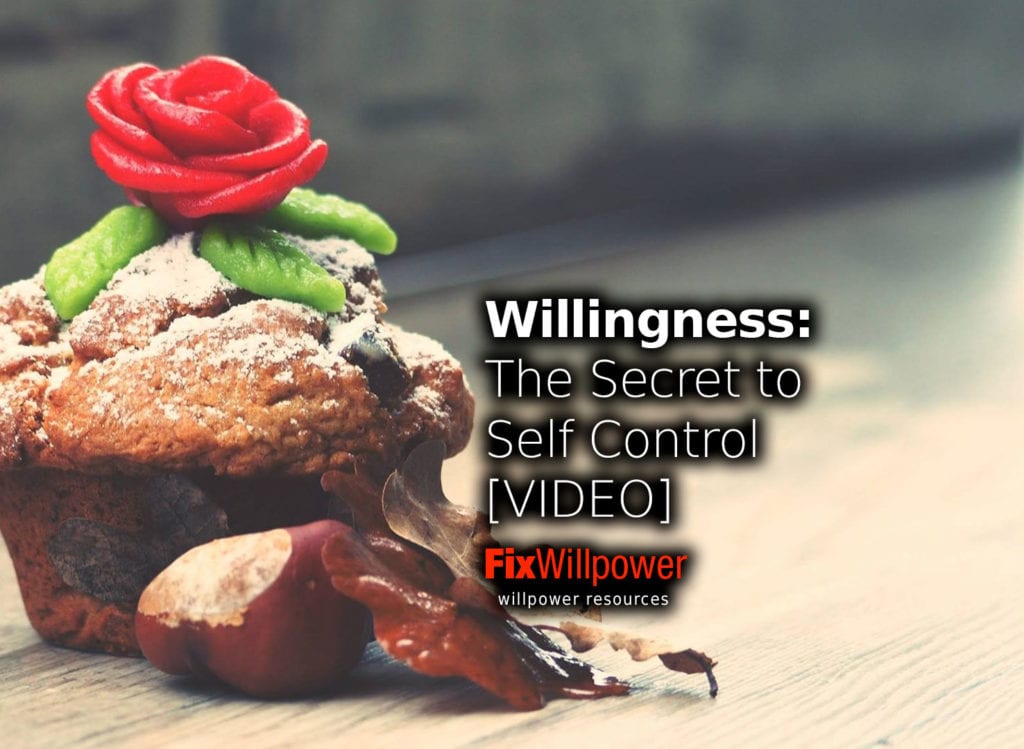
Whatever your challenge, eat less sugar, go for a run, empty your inbox, there are times you don’t feel like keeping the promise you made to yourself.
How to overcome your cravings or do the demanding tasks that you just don’t feel like doing?
Willingness is the answer or part of the answer.
Willpower technique that increases your chances 2x
Jonathan Bricker‘s work has uncovered a scientifically sound approach to behavior change that is twice as effective as most currently practiced methods. His new methods are driving new norms and new apps for how people quit smoking and decrease obesity, saving many people from an early death.
Jonathan is an internationally recognized scientific leader in a bold approach called acceptance and commitment therapy. A Stanford researcher called his use of the approach:
a breakthrough in behavioral research [that] has major public health implications for the major causes of preventable death.
Bricker and his team, having received $10 million in total federal research grants to study this topic, are rigorously testing this intervention on multiple platforms, including smartphone apps, websites, and telephone coaching.
This talk was a TEDx event.
My Tweak on Willingness and Self-Control
When I first saw this video about acceptance and willingness, I noticed the idea of the third-person approach to self-control. Here, the speaker talked about how people say “I have a craving” and then try to overcome the temptation.
Instead, he advised to change your self-talk just a little bit and say, “I notice that I have a craving.”
Research on self-talk has found that the most effective way to influence yourself as an outside observer. You may want to try to say something like, “I notice that John has a carving,” where John is you.
You can also learn more about changing your negative self-talk.
Self-Control by Observing from the Outside
I decided to experiment with the type of self-talk I have. The key here is to observe yourself as another person would. You know, when you watch a movie and think to yourself, how this person can be so stupid, weak, inconsistent, careless, and lack self-control.
Now do it to yourself. Let’s say you quit smoking and feel the cravings. Focus on mentally examining yourself with genuine interest. Something like:
- “Hmm, he really wants that cigarette.”
- “I wonder if he’s able to hold off? It’s hard, but think about the feeling of accomplishment.”
- “So, you want to get that pack of cigarettes? Well, I wouldn’t!”
You can use this type of self-talk in almost all situations and defuse the situation. You will give yourself some time between the craving and breaking your commitment. This time will, in turn, let you compose yourself enough that you will be able to regain self-control and resist the temptation.
When you repeatedly go through cycles like this, your brain will learn and becomes more resistant to the temptation. As a bonus, you can use the willpower you gain this way on any other demanding task.
If you prepare your dialog in your cold state, it’s more likely that you remember to use the technique when you need it.
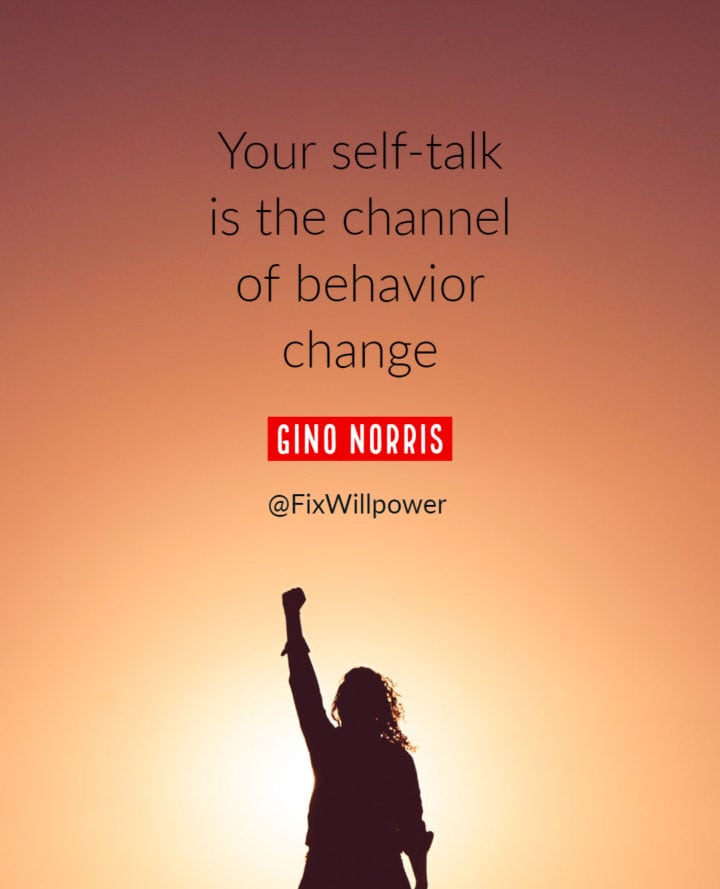
Your self-talk is the channel of behavior change ― Gino Norris
How to remember the willingness self-control method?
The main problem with this willpower technique is that you may forget to use it.
For example, you are trying to lose weight and walk by the local bakery. Your brain goes, “I really need that box of donuts!”
You try to resist, “I won’t, I won’t, I won’t, I won’t!” until you cave and observe yourself licking the last crumbs from your fingers.
Now you remember that you should have used the willingness technique.
Use some physical memory aid to remember what you need to do.
I find one of the best solutions is a rubber band around your wrist. Every time you have a weak moment, the band around your wrist will remind you what you need to do.
Whenever you use the help of the bracelet, switch hands after you have dealt with the willpower emergency. This way, you will not become accustomed to the band around your wrist.
The wristband should stay prominent in your brain for at least 30 days. In most cases, 30 days is enough to internalize the willingness technique, and you can stop using it.
If you are like me, then you quickly get accustomed to the wristband.
Read more about remembering the things you have to do.
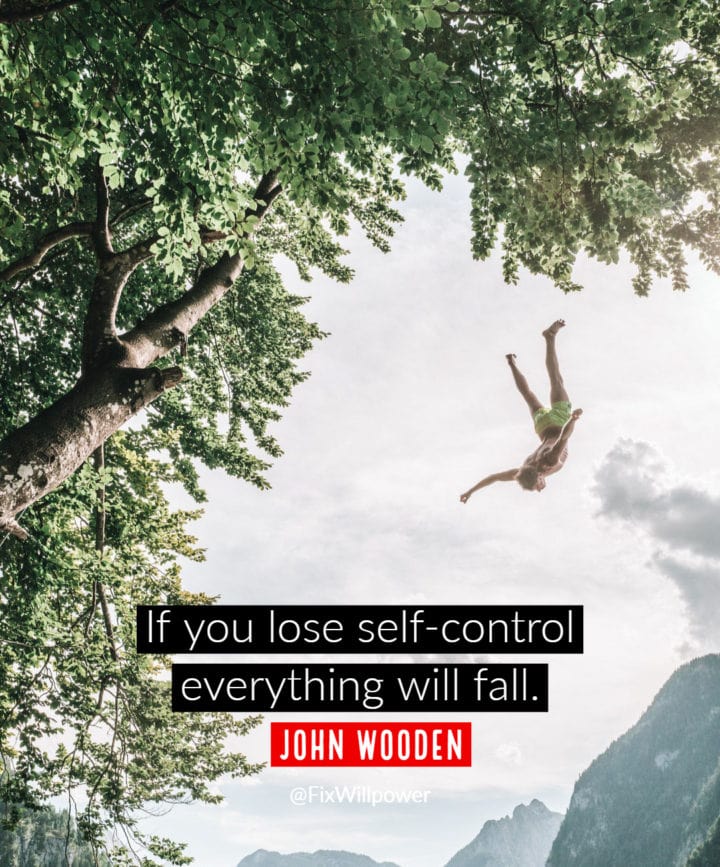
If you lose self-control everything will fall. – John Wooden
How to put willingness in action?
There’s a fair chance that you have some willpower challenge that you might use the willingness approach. Here’s what you need to do if you may have cravings:
Create a script that you use every time you feel your willpower weaken. Let’s say you try to eat less and lose weight.
- Interesting, Paul (that’s you), really craves the snack
- He’s not hungry! He just wants the instant gratification of the sugar high. I wonder how long he can hold off.
- When’s the next mealtime? 2 hours? OK!
- Maybe drink some water or tea without the sugar?
- Think about the feeling you have after the next mealtime when you can celebrate this small victory over your
- What do you think? Can you hold off for a little bit more?
Running a dialogue based loosely on a similar script is like your personal coach. You know what you have to do, but you need a bit of motivation and encouragement. You can get it from yourself.
Another version is the situation where you have to do something hard, and you really don’t want to. Let’s say you need to go for a run. To make this work, you have to set a specific time when you will go running.
When the time approaches and your brain is finding ways to weasel out of the responsibility, you run a similar script in your head. Simply replace the craving for something with the desire to avoid the task:
- Interesting, Paula, really doesn’t want to go for a run.
- She’s not really tired! She just wants to sit there and chew on mental gum. I wonder if she will break her promise to herself?
- How long will the run take? Maybe an hour? OK!
- Let’s put on the running clothes?
- Think about the feeling you have after the run when you can celebrate this small victory over your laziness.
What do you think? Get out there now!
Next, you can take a look at this blog post if you want to get a first-hand account of how to quit smoking.
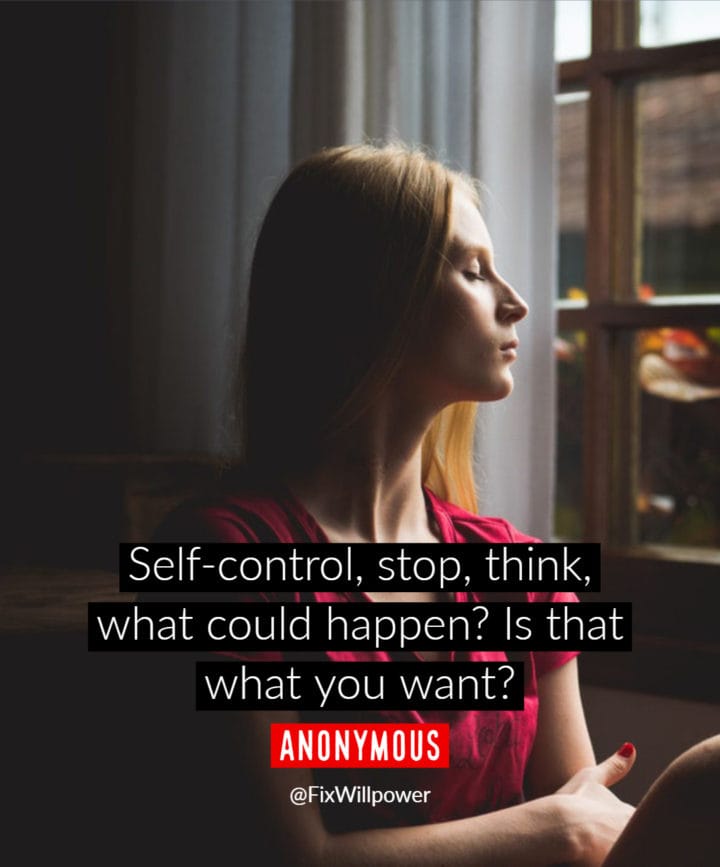
Self-control, stop, think, what could happen? Is that what you want? – Anonymous
Here are the main findings from 7 studies about how self-talk works
Studies 1a and 1b showed that using non-first-person pronouns and your name (rather than first-person pronouns) during introspection enhances self-distancing.
Studies 2 and 3 examined the implications of these different types of self-talk for regulating stress surrounding making good first impressions (Study 2) and public speaking (Study 3). Compared with the first-person group, the non-first-person group performed better according to objective raters in both studies. They also displayed less distress (Studies 2 and 3) and engaged in less maladaptive post-event processing (Study 3).
Studies 4 and 5 examined how different forms of self-talk influence the way people appraise social-anxiety-provoking events. They showed that non-first-person language use (compared to first-person language use) leads to appraise future stressors in more challenging and less threatening terms.
A meta-analysis (Study 6) showed that none of these findings were moderated by trait social anxiety, highlighting their translational potential. Together, these findings show that small shifts in the language people use to refer to the self during introspection consequentially influence their ability to regulate their thoughts, feelings, and behavior under social stress, even for vulnerable individuals.
Pinkcast 2.22: This is how to talk to yourself | Daniel H. Pink
Acceptance and commitment therapy
Willingness in part of acceptance and commitment therapy (ACT). ACT is a psychological intervention that uses
- acceptance,
- mindfulness,
- commitment, and
- behavior-change strategies,
to increase psychological flexibility. The goal is not the elimination of difficult feelings. You learn how to stop avoiding, denying, and struggling with your negative emotions.
You are willing to accept that the feelings are appropriate responses in situations. You notice the feelings and move on. This helps to accept the challenges you face and focus on the necessary changes in your behavior.
2015 review findings show that ACT is more effective than treatment as usual or placebo and that ACT may be as effective in treating anxiety disorders, depression, addiction, and somatic health problems as established psychological interventions.
How Acceptance and Commitment Therapy Works
- Accept your reactions and be present
- Choose a valued direction
- Take action
The key is that it’s ineffective and counterproductive to control negative emotions. Fighting these feelings will lead to more distress. ACT encourages to react more thoughtfully to change the way you think:
- be mindful,
- pay attention to how you think,
- focus on your values, and
- commit to action.
These behaviors help you learn to accept your feelings and change your attitude and emotional state.
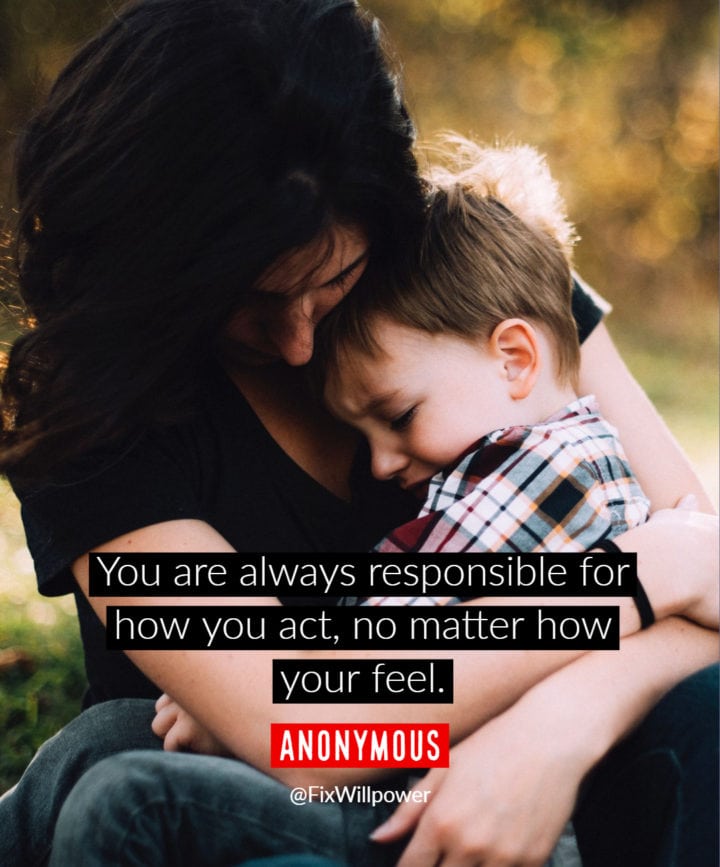
You are always responsible for how you act, no matter how your feel. – Anonymous
6 core principles of ACT
ACT commonly employs six core principles to help clients develop psychological flexibility.
Cognitive defusion: Learning how to reduce the tendency to give real weight to thoughts and feelings.
Acceptance: Allowing unwanted feelings and urges to come and go without struggling with them.
Mindfulness: Contact with the present moment here and now, experienced with openness, interest, and receptiveness.
The observing self: viewing yourself from the outside.
Values: Discovering what is most important to you.
Committed action: Setting your goals according to values and taking action to achieve them.
Be calm
The most important thing in willingness is to be calm and not let the negative emotion or craving get the better of you.
Focus on the feeling, examine it as a specimen, and label it. See how it is contrary to your values, and give yourself time to react in a way that moves you in the right direction.
The most effective way to become calmer and more in control of my impulses is meditation. It’s slow but seems to have some meaningful results on self-control.

He who reigns within himself, and rules passions, desires, and fears, is more than a king. – John Milton
Check out other videos about changing your habits.
______________________________
Photo on Visual Hunt

![Read more about the article Why you will fail to have a great career: Larry Smith [VIDEO]](https://fixwillpower.com/wp-content/uploads/great-career-429x314.jpg)


![Read more about the article Spend Some Time Alone [and Focus on Yourself]](https://fixwillpower.com/wp-content/uploads/spend-some-time-alone-429x314.jpg)
Great blog.
I wonder if Jonathan Bricks has a book.
I couldn’t find any so far, I thought may be he’s a coauthor of something.
I would love to read his life research and experiences in a book.
Thank you,
This is a great idea. I’m going to try it out immediately with my diet. I always look how others break their diets and think to myself that I would be stronger. In the same situation I often cave and eat what I shouldn’t. Observing myself from the distance might do it for me. I just have to remember to do it.
Thanks for your comment! I hope it works for you. I have used it when I want to go to the fridge at night. “Hey, dude! What are you doing?”